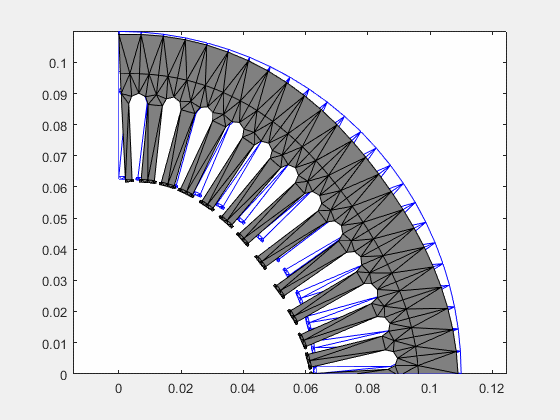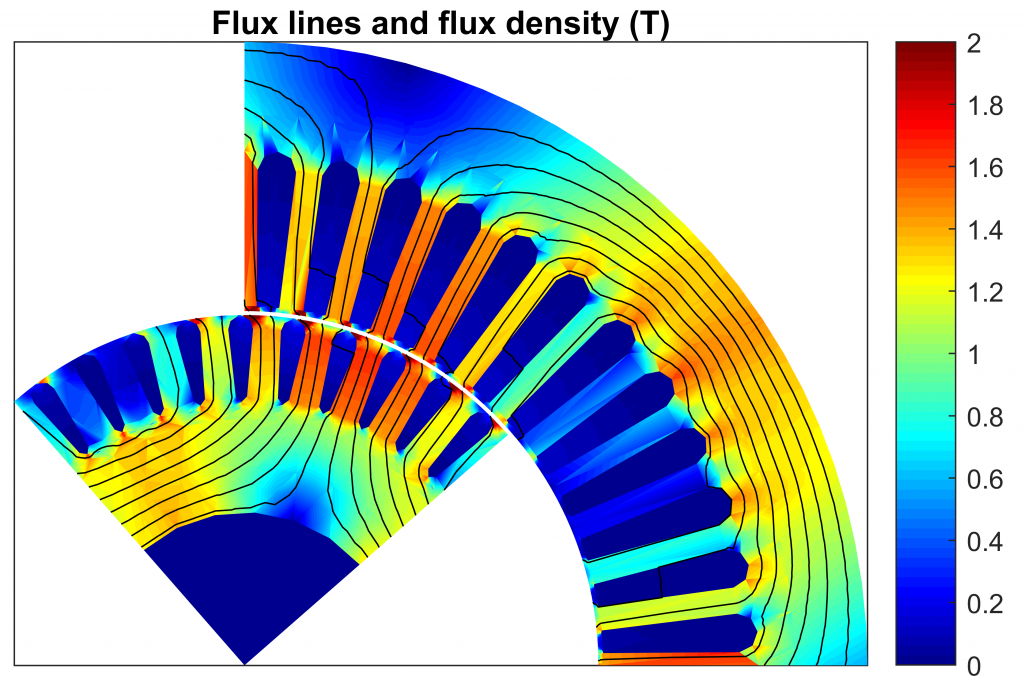It's listicle time
6 things you might not know about finite element analysis – but should!
1. It’s flexible
Finite element analysis is an incredibly flexible and versatile tool. Once you have the basic building blocks (ahem, SMEKlib) in place, the modelling world is open for you.
For example, let’s say you are developing electric motors. You grow bored of the simple quarter-of-a -machine model, and want to simulate a broken rotor bar.
Good news – you can! A small modification to the circuit equations plus a larger problem domain, and you’re set. And the same applies to inter-turn faults. Or phase-to-phase faults. Or eccentricity.

Or, you are developing a PM motor with tooth-wound coils, and want to move to a six-phase supply to eliminate those pesky sub-harmonics. You can!
Or, you work on magnetic components. Let’s say an inductor with a sintered core, and want to include your own iron model. Check.
I’ve probably made my point clear by now. If you have a few Lego blocks in your pocket (too lazy to come up with a better metaphor now), and know how to use them, you can do pretty much anything you want. You may have to code a few extra lines, but you are not bound to the standard boredom. Not even near it.
2. It’s flexible
This is such an important point that it bears repeating. Previously, we assumed the role of a motor designer, so let’s venture a little further on that path.
Earlier, you analyzed the effect of an inter-turn fault on your motor’s performance. Now, you would obviously want to know if your machine is going to melt as a result. For that purpose, you’d of course want to do some thermal analysis.
Well, guess what – you can!
Moreover, you can do it with the exact same building blocks I mentioned earlier. Parameters and results will mean different things (plus you’ll probably have to include the third dimension for our example to work), but immediately beneath the hood, the software itself will stay exactly the same.
And the same applies to electric analysis, for example. After all, you probably want to know the electric stresses that might contribute to your insulation fault in the first place.
And the same for mechanics – you get the point.

3. It’s reaaaally flexible
Here we go again. Let’s say you want to simulate thermal and magnetics at the same time. (After all, resistances are highly temperature-dependent, and the currents in turn generate heat.)
…you can. It’s no trouble at all to combine the two models into one. It’ll be heavier to compute, of course, but it’s still only a matter of sticking two blocks together.
4. It is based on nightmarish mathematics
This might seem to contradict my previous points, but bear with me.
The basic principles of FEA are quite simple, understandable to anyone with a little engineering mathematics under their belt. Correspondingly, it can be applied to a very large set of problems quite easily.
However, moving outside that set can be easier said than done. Do so blindly, and there’s no guarantee that the results will make sense anymore.
What I mean, the actual proof of if/why the FE approach works is rather complex. For the aforementioned problem types (and many more), it’s already been taken care of. But if you want to move beyond them, be prepared to suffer a little.

5. KISS it
As in, a simpler model is often a better model. Think 2D instead of 3D. And then static instead of dynamic. And then circuit model instead of finite elements. And then go buy a stock motor instead.
No, wait.
But you get the point, being a literate adult and all that.
Simple is good. For example, often a few 2D slices coupled together yield 80 % of the results of true 3D analysis, at 20 % the time and effort. Read the three previous points if you have doubts about the coupling.
6. It’s only a tool
A wise man once said that finite element analysis can turn a good engineer into a better engineer, and a bad engineer into a dangerous engineer.
He wasn’t wrong. Everything should begin and end by understanding the problem. Meaning, you have to develop a basic understanding of the problem before committing to numerical analysis. And, more often than not, you’ll have to fix/augment your initial understanding by the computed results.
Ignoring either step is selling yourself short.
Conclusion
Finite element analysis is awesome. It’s incredibly awesome if you know a little more than using a commercial software (you may now proceed to give me your moniez).
Check out EMDtool - Electric Motor Design toolbox for Matlab.
Need help with electric motor design or design software? Let's get in touch - satisfaction guaranteed!
